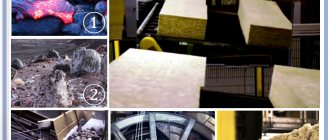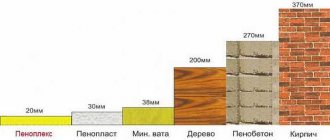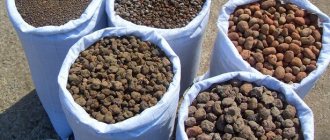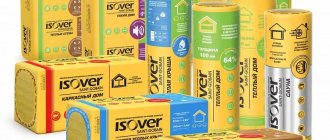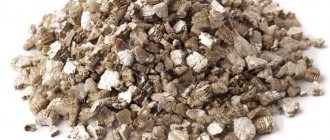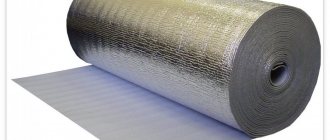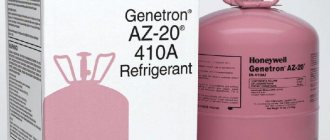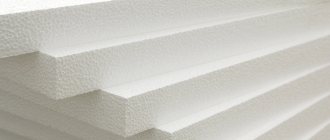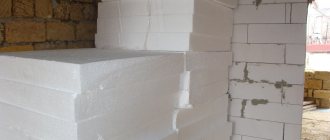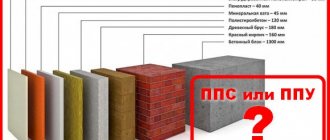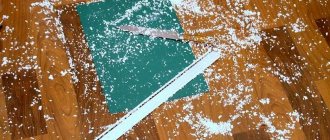Expanded polystyrene PSB-S-25, characteristics and comparison with PSB-S-25F (0), PSB-S-25F.
Among the popular building materials for thermal insulation, the clear leader is polystyrene foam PSB-S-25. It has the best strength and thermal conductivity. It is used for a huge number of tasks - insulation of roofs, facades and balconies. The material is made from styrene granules, which contain carbon dioxide. When heated, they begin to sinter with each other and become several times larger. Due to this, the material has a large volume and low mass. Production costs are minimal.
Properties and characteristics
First, you need to figure out what exactly the abbreviation PSB-S-25 means. In ordinary language this is translated as “expanded polystyrene foam suspension, unpressed, self-extinguishing.” The digital designation “25” gives an idea of the density of the material. Polystyrene foam (expanded polystyrene) differs from other insulation materials in that it is durable and environmentally friendly. The material has a low degree of water absorption and will not attract pests. The content of about 97% air allows for excellent thermal insulation and sound insulation.
Characteristics of polystyrene foam PSB-S-25:
- The density of the material ranges from 14 to 25 kg/m3.
- With linear deformation, the foam has a compressive strength of 0.1 MPa.
- The thermal conductivity of the material is only 0.039 W/m*K.
- The bending strength of the foam is 0.18 MPa.
- The material can be used in the range from -70 degrees to +85 degrees.
Due to modern manufacturing technology, the material burns for no more than 3 seconds. In addition to the fact that the granules are filled with carbon dioxide, polystyrene foam is treated with a fire retardant. According to regulatory documents, insulation is classified as a product marked G1 - low-flammable. But according to safety precautions, heating the thermal insulation material by more than +85 degrees is unacceptable. In addition, the slabs cannot be installed indoors and should be covered with a protective layer of cement-sand screed with a thickness of 3 cm.
The dimensions of PSB-S-25 foam boards are regulated according to GOST 15588-86. This refers to the length, height and thickness of the material. Standard size slabs have a length from 0.9 to 5 meters, and a width can be from 0.5 to 1.3 meters. The size measurement step in all cases is 5 cm. The foam has a thickness of 0.02 to 0.5 meters. Brands and standards are always marked on the packaging.
Foam plastic PSB-S with a density of 25 kg/m3
Foam plastic of the PSB-S-25 brand is produced by pressless suspension polymerization: granules impregnated with special compounds are foamed and treated with steam, as a result of which their volume increases up to 20-40 times. Sheets of the required size are formed from the foam mass with high quality adhesion of adjacent cells. The characteristic features of the polystyrene foam obtained in this way are strength, excellent insulating properties, low thermal conductivity and water absorption coefficients. This brand is widely in demand in private construction; the maximum effect is achieved when facades are insulated.
Characteristics and properties
The PSB-S 25 marking indicates the manufacturing method, the density of the insulation and the presence of fire retardants in the composition (letter “C”). In addition to sheets with a smooth surface, a type of foam plastic is produced, recommended for installation on external walls with subsequent plastering. In this case, the letter “F” (facade) is indicated at the end of the marking; the outer surface of such slabs is slightly rough. The material complies with sanitary and hygienic standards and is safe for humans.
Technical characteristics of PSB-S 25 are regulated by GOST 15588-86. These include:
- Thermal conductivity coefficient – no more than 0.039 W/m·K.
- The density of the insulation is from 15.1 to 25 kg/m3 (this is the main characteristic; sheets with different specific gravity belong to a different brand).
- Strength: compressive strength at 10% deformation - no less than 0.1 MPa, bending strength - 0.18.
- Water absorption by volume is no more than 2% in 24 hours. In practice, polystyrene foam PSB-S 25 absorbs about 0.5%.
- Vapor permeability – 0.05 Mg/m·h·Pa, the insulation is not breathable, which limits its use in interior work (without appropriate ventilation, natural moisture will not be removed).
- Destruction temperature – +160 °C.
- The durability of expanded polystyrene, subject to all operating rules, protection from ultraviolet rays and from exposure to a number of solvents and concentrated acids, reaches 80 years.
This foam is produced in slabs with strict geometry; the nominal dimensions of the sheet are regulated by the same GOST. In particular, its length varies from 900 to 5000 mm with an interval of 50 mm, width - from 500 to 1300 with the same step, thickness - from 20 to 500 in 10 mm intervals. The average weight of one sheet 1200x1000x50 mm is 1 kg, PSB-S 25 does not exert a significant load on building structures, but requires additional fixation due to low adhesion. The standard allows for the manufacture of products with non-standard dimensions, but they usually have a higher price.
Scope and features of application
Expanded polystyrene PSB-S with a density of 25 kg/m3 is suitable for the manufacture of decorative elements: cornices, frames, pilasters, columns. Slabs of this brand are recommended to be purchased when designing three-dimensional signs, creating dummies and mock-ups, arranging shop windows and stands (subsequent painting is allowed). Environmental friendliness and compliance with sanitary standards allow this polystyrene foam to be used as packaging in any industry, including food. But the main area of application of PSB-S 25 is construction, this is due to its high heat and sound insulation properties with a small sheet thickness, ease of installation, resistance to moisture and most biological threats, with the exception of rodents.
Installation of insulation indoors is limited by the location of the dew point, fire and ventilation standards; the most striking example of the use of PSB-S in buildings is the strengthening of the thermal resistance of floors. The characteristics of this brand of expanded polystyrene are optimal for creating a thermal insulation layer in facade systems, both with subsequent plastering and in those covered with siding. It is recommended to purchase it as a filler in construction sandwich panels or thermoblocks. The thickness of the insulation is determined by thermal engineering calculations.
A clear advantage of PSB-S 25 is the presence of fire retardants in the composition; this solves a number of problems related to fire safety requirements. According to GOST, the self-burning time of this insulation should not exceed 4 s; this parameter of polystyrene foam must be checked during quality testing. Accordingly, it cannot be used without the letter “C” in the marking even in private construction.
The main factor taken into account in the operation of PSB-S 25 is the need for protection from UV rays. The shelf life of insulation in packaging is limited to 12 months, after which it begins to turn yellow and lose its thermal insulation properties. Another condition is the choice of the right adhesives for fixation. The cellular structure of expanded polystyrene is destroyed under the influence of organic solvents (toluene, acetone); they should not be part of contacting building materials.
Price
The average price of 1 m3 for a standard PSB-S brand is 25 – 2300 rubles. The material is sold both individually and in wholesale quantities, the latter are cheaper: for comparison, a separately purchased sheet measuring 1200x1000x50 mm costs 190-220 rubles.
It is permissible to buy polystyrene foam in advance only if it is used within 12 months from the date of manufacture and properly stored: this insulation cannot be left in the sun for a long time. Facade grades with finely granulated surfaces have a higher price - from 2,700 rubles per 1 m3 of PSB-S 25F.
Scope and advantages
Expanded polystyrene is intended for thermal insulation and sound insulation of various surfaces - walls, roofs and ceilings. Since foam plastic has special strength, it can withstand mechanical impacts of great force. The material is used to create sandwich panels. The foam is placed in the middle. Thermal insulation boards made of polystyrene foam PSB-S-25 are very often used to create thermal protection for wires. If there is a small load on the structure, it is better to pay attention to PSB-S-15, since it is several times cheaper.
The advantages include:
- Large scope of application.
- Resistance to chemicals, temperature changes and mechanical pressure.
- The price of polystyrene foam is much lower than that of other products with a higher density, but the model has excellent strength.
- Easy installation - foam plastic can be easily raised to a height without the use of special equipment, it is easy to cut with a stationery knife and give it any shape.
- Low level of flammability, fades quickly.
The cost largely depends on the density, size and manufacturing company. It can be from 1700 to 2400 rubles per 1 m3. With this volume you can get from five to fifty sheets. One sheet will cost from 60 to 445 rubles.
The material has a huge number of properties that make it better than other types of heat insulators used for facade insulation:
- Biological safety.
- Long service life.
- Moisture resistant.
- Ideal compressive strength - due to this property, polystyrene foam perfectly retains its structure and dimensions even in severe frosts and in the summer heat.
What’s especially pleasing is that polystyrene foam does not age, and harmful microorganisms cannot develop on it. Sheets of foam plastic of this brand are ideal for shaped cutting and creating partitions. Expanded polystyrene PSB-S-25 is the best choice for external insulation of facades. After this everything is plastered. The type of composition does not matter. The material is used in the food industry for packaging products, and this indicates the environmental friendliness of the material. It is not installed inside rooms, since the insulation is flammable. Polystyrene foam is produced in the form of white panels. Sheets can be ordered according to individual sizes.
Differences between PSB-S 25 and other thermal insulation materials included in the PSB-S group:
- Expanded polystyrene 25 belongs to the group of medium-density polystyrene foam insulation.
- It has average thermal conductivity and water permeability in comparison with other types of foam.
- It is more expensive than PSB-S 15, but cheaper than other expanded polystyrene foams of the PSB-S group.
The relatively low price combined with sufficient strength makes polystyrene foam 25 the material of choice in situations where the use of PSB-15 is impossible due to its low strength characteristics.
Insulation technology
The ease of cutting and laying the material has ensured its unprecedented popularity among all developers. If you make proper calculations, you can create a comfortable indoor microclimate.
Which sides to mount on?
Before starting insulation, you should immediately determine where and on which side the insulation will be located. It is not profitable to install slabs indoors. This is due to the fact that the wall will cool down greatly, and much more insulation will be required to achieve a normal result. In addition, the dew point in this case will be at the junction of the wall/foam, and this is fraught with the development of mold.
If you install the insulation material outside, the dew point will fall on the insulation material. But there is no moisture in it, and therefore condensation will not form. The wall will warm up from the inside and will not get wet, and this will increase the service life of the structure insulated with polystyrene foam. When the material is used to insulate an attic, condensation will form in the attic space, as it will be between the roofing material and the insulation.
Calculation of the required thickness
Every region has its own standard of thermal resistance. The indicator is a constant value and is denoted by R. For a sample calculation, take the value as 2.8 m2*K/W. The foam thickness is calculated using the following formula:
R=R1+R2
R1 represents the wall, and the foam is taken to be R2. For brick walls, the optimal thickness of polystyrene foam is from 50 to 60 cm with external and internal finishing, as well as a layer of waterproofing.
Cutting
The material should be cut only with a well-sharpened painting knife. The tool must be properly prepared for use. If the blade is dull, you will have a lot of debris and it will be difficult to remove it - the polystyrene particles create a static charge and will “stick” to various surfaces. The sheets should be cut along a ruler. You can replace the ruler with a building level. Use a wooden plane for cutting.
Installation of polystyrene foam under plaster
When insulating and finishing the facade of a house, they use the technology of installing slabs on glue and umbrella dowels. The top of the material can be finished with ordinary or decorative plaster. Pre-seal the gaps and use gluing plaster mesh.
It is also important to level the walls before installing the panels. As a result, the material, which is correctly laid, will create a perfectly flat surface. Sometimes, before laying polystyrene foam PSB-S-25, the wall is first finished with plaster, and then the slabs are fixed.
Creating a frame
Sometimes they use the technology of installing foam plastic panels between the beams, which are located horizontally, and a vertical sheathing is created on them. If gaps appear between the bars and slabs, they need to be blown out with foam.
This method is also used for gypsum plasterboard partitions, in which insulation is placed between the profiles. But in this case, the material should be used as a heat insulator. Since wood itself is an ideal heat insulator, installing foam plastic between the beams will be the optimal solution to eliminate heat loss at home.
When choosing metal sheathing, this option will not work. In this case, the insulation should be laid under the frame. To do this, we screw the brackets that will secure the metal profiles to the surfaces of the ceiling or walls.
Why is it worth buying polystyrene foam in an online store?
The online store offers only favorable conditions for purchasing goods. Thermal insulation materials are presented here in a huge range. That is why each buyer will be able to choose the most ideal option depending on their own budget. The main advantages of purchasing these products in the online store:
- The price of insulation is as affordable and profitable as possible.
- Excellent product quality and reliability.
- Possibility to buy wholesale and retail.
- Prompt delivery and payment for the order in any convenient way.
Expanded polystyrene PSB-S has been used in construction for 40 years. And during this time, it has become extremely popular due to its excellent performance characteristics: efficiency, low level of vapor permeability and thermal conductivity, ease of installation and affordable cost.
Comparison with PSB-S-25F (0), PSB-S-25F
So, in order to compare the quality of materials, let's determine what each subspecies is needed for. PSB-S-25 is the most popular and common material, suitable for almost everything. Option PSB-S-25F (0) is a lightweight façade option. PSB-S-25F is an ideal solution for facade finishing. There is no way to compare the material in the laboratory, so it will be based on visual and tactile differences.
- Sample No. 1 (PSB-S-25) - breaks easily, grains are large (0.2-06 cm).
- Sample No. 2 (PSB-S-25F (0)) is a lightweight version of the first sample. The break occurs without much effort, but it is felt that the material is denser than the previous sample. The grains are medium in size (0.1-0.2 cm).
- Sample No. 3 (PSB-S-25F) is an option that is intended exclusively for the facade, only it is used in high-quality SIP panels. The sample is denser than the previous two, breaks more easily, and has small grains.
As you can see, no matter what anyone says, all 3 brands are even visually and torn apart.
